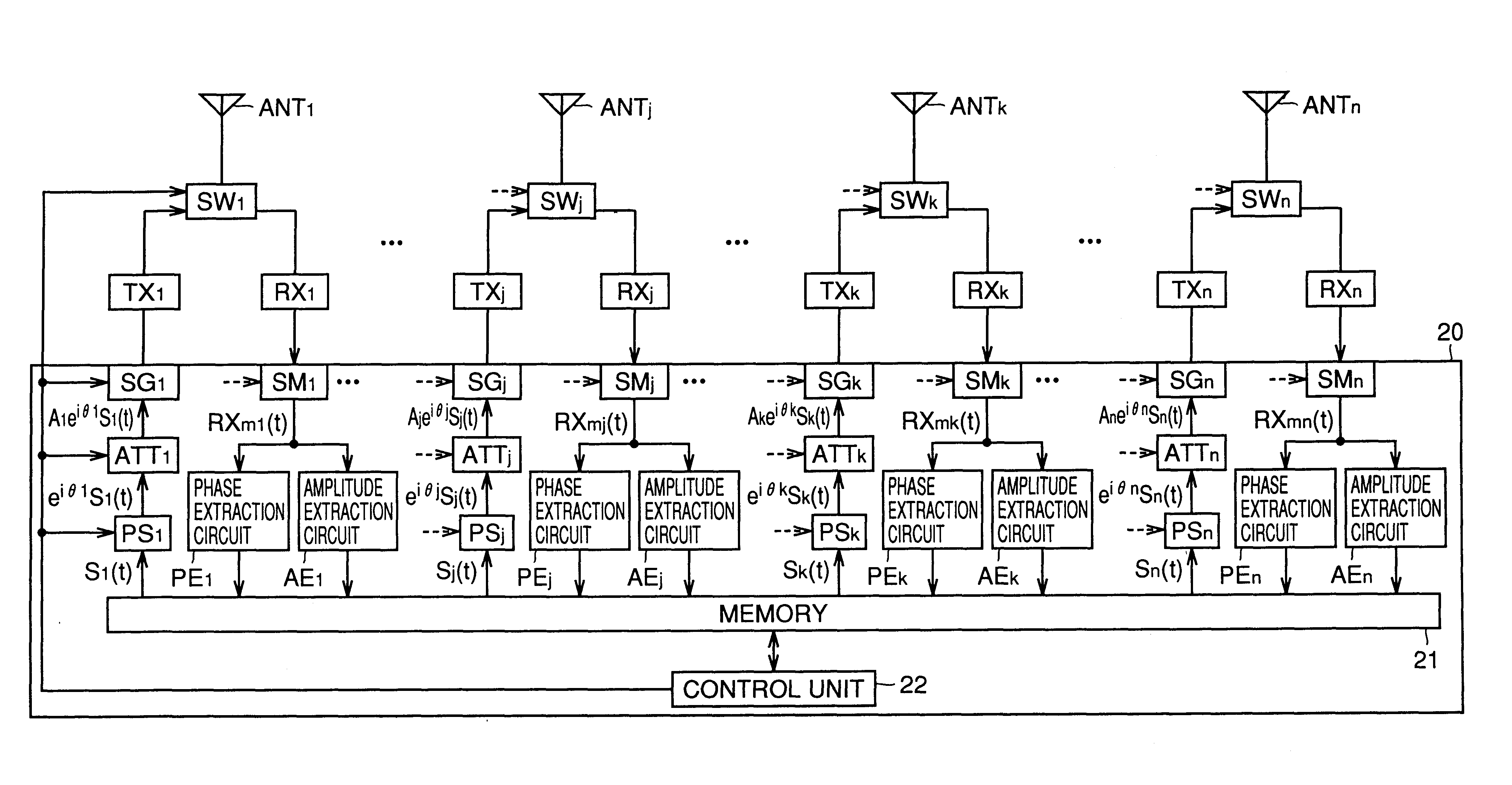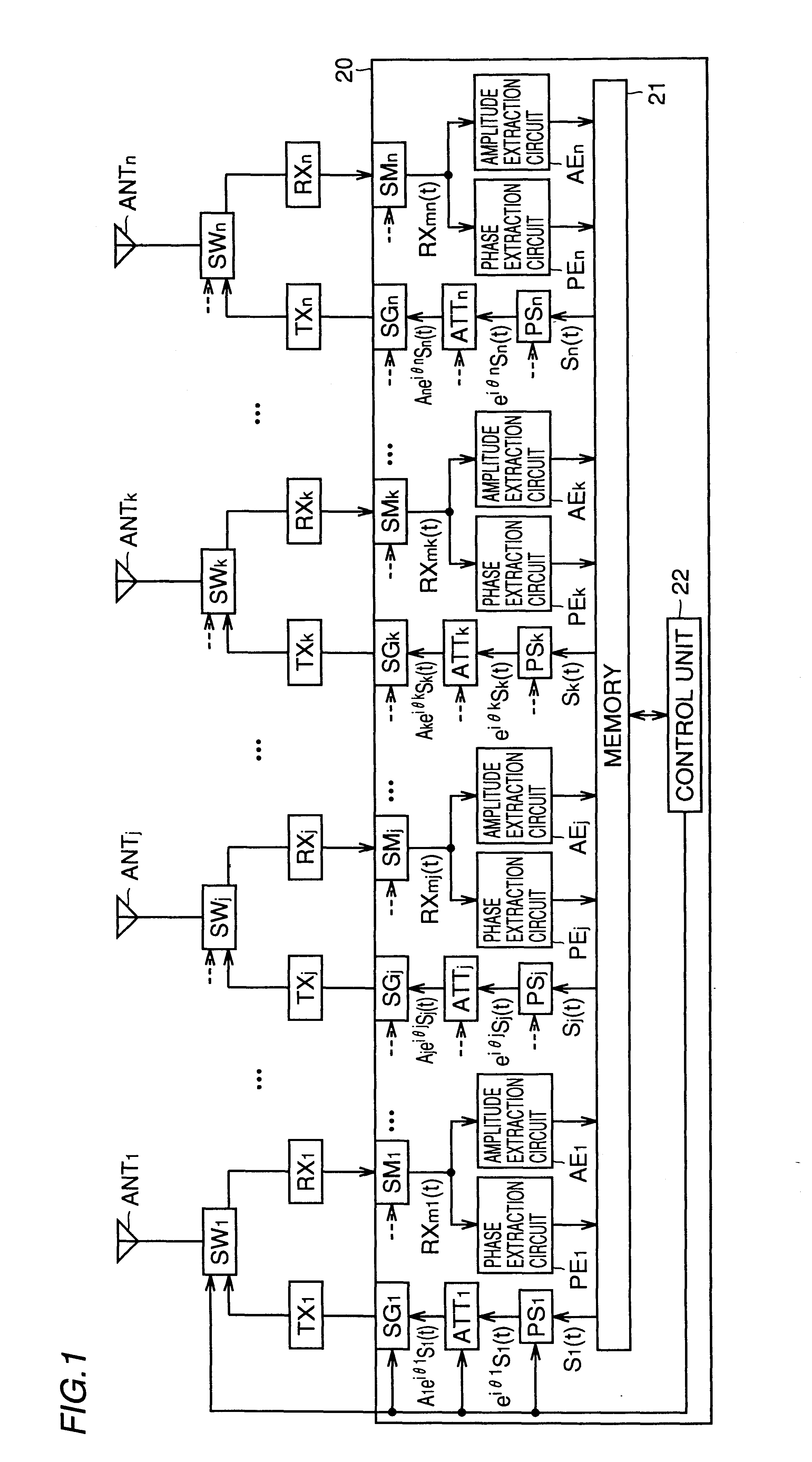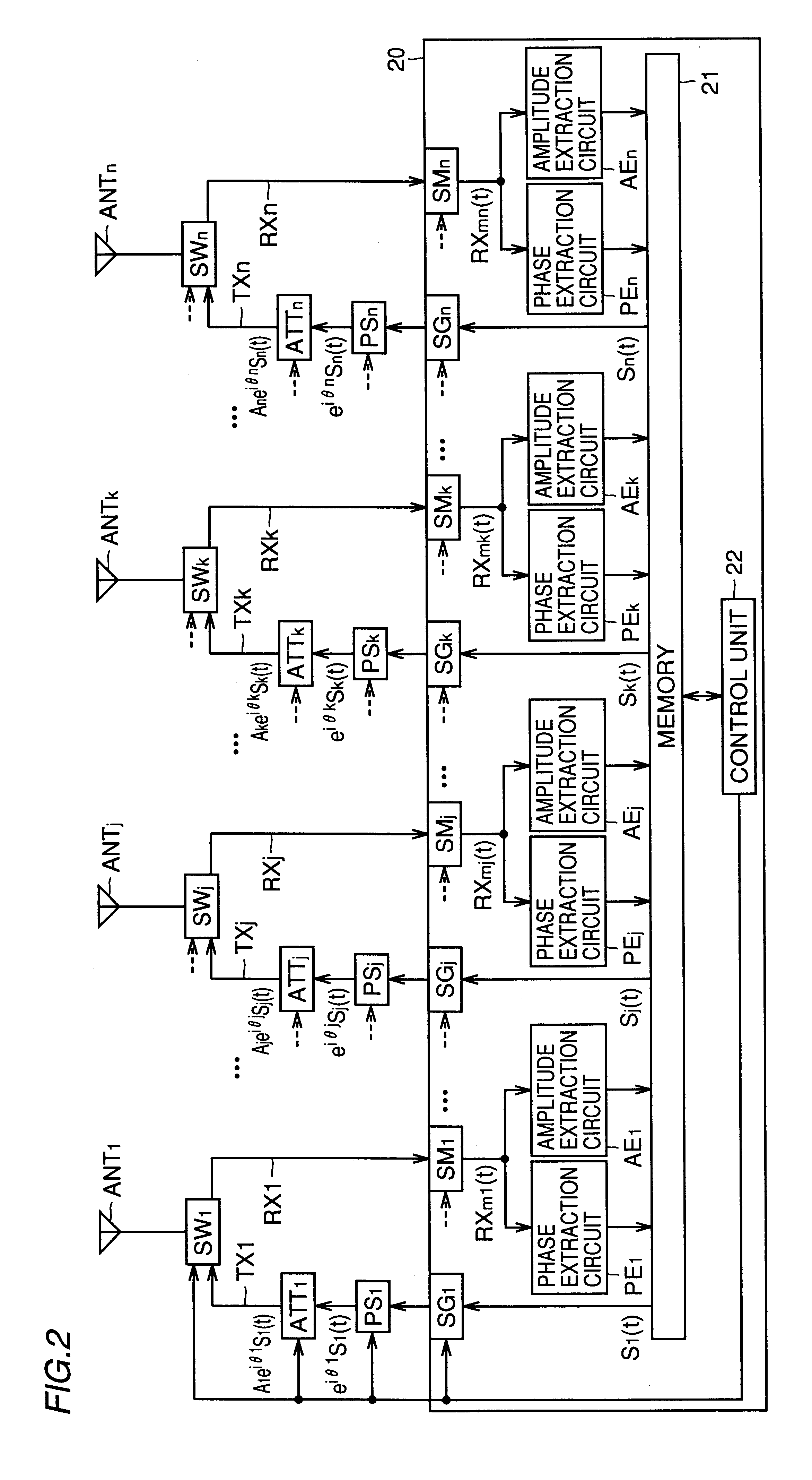Radio device and method of calibration thereof
- Summary
- Abstract
- Description
- Claims
- Application Information
AI Technical Summary
Benefits of technology
Problems solved by technology
Method used
Image
Examples
fifth embodiment
FIG. 34 is a block diagram showing a specific circuit structure according to a fifth embodiment of the present invention. In the fifth embodiment shown in FIG. 34, time averaging circuits are added to the first embodiment of the first structure of the present invention shown in FIG. 15. The operation principle of an adaptive array radio base station according to the fifth embodiment is now described.
In calibration, a phase rotation quantity θj of a phase shifter PSj of a j-th (j=1, 2, . . . , n) transmission system is set to 0 and an amplitude fluctuation quantity Aj of an attenuator ATTj is set to 1 (=0 dB). A known signal Sj(t) corresponding to the j-th transmission system is read from a memory 21 and transmitted through an antenna element ANTj.
The transmitted signal is received in antenna elements ANTk (k=1, 2, . . . , n, where j≠k) of all transmission systems excluding the j-th transmission system, and measured by a received signal measuring unit SMk of each transmission system ...
sixth and seventh embodiments
FIG. 37 is a block diagram showing a specific circuit structure of a sixth embodiment of the present invention. In the sixth embodiment shown in FIG. 37, time averaging circuits are added to positions different from those in the fifth embodiment shown in FIG. 34 in the first embodiment of the first basic structure of the present invention shown in FIG. 15.
Both sides of the above equation (1-2) are divided by a known signal Sj(t) for calculating natural logarithms and performing Taylor expansion without time averaging, dissimilarly to the fifth embodiment. When the S-N ratio is not much excellent, the result of Taylor expansion is expressed in the following approximation (2-8).
When separately extracting imaginary parts and real parts on both sides of the equation (2-8) and performing time averaging, the term including a noise component njk(t) on the left side reaches 0 while the remaining terms are constant with respect to time, and hence the following equations (2-9) and (2-10) are ...
eighth and ninth embodiments
FIG. 42 is a block diagram showing a specific circuit structure of an eighth embodiment of the present invention. The eighth embodiment shown in FIG. 42 is different from the sixth embodiment shown in FIG. 37 merely in a point that division by a known signal Sj(t) is performed not on a measured received signal RXj(t) but on a received signal subjected to calculation of the natural logarithm, separated into imaginary and real parts and time-averaged in a final stage.
FIG. 43 is a block diagram showing a specific circuit structure of a ninth embodiment of the present invention. The ninth embodiment shown in FIG. 43 is different from the seventh embodiment shown in FIG. 38 merely in a point that division by a known signal Sj(t) is performed not on a measured received signal RXj(t) but on a received signal subjected to calculation of the natural logarithm, time-averaged and separated into imaginary and real parts in a final stage.
The flow chart of FIG. 39 also inclusively shows operation...
PUM
 Login to view more
Login to view more Abstract
Description
Claims
Application Information
 Login to view more
Login to view more - R&D Engineer
- R&D Manager
- IP Professional
- Industry Leading Data Capabilities
- Powerful AI technology
- Patent DNA Extraction
Browse by: Latest US Patents, China's latest patents, Technical Efficacy Thesaurus, Application Domain, Technology Topic.
© 2024 PatSnap. All rights reserved.Legal|Privacy policy|Modern Slavery Act Transparency Statement|Sitemap



